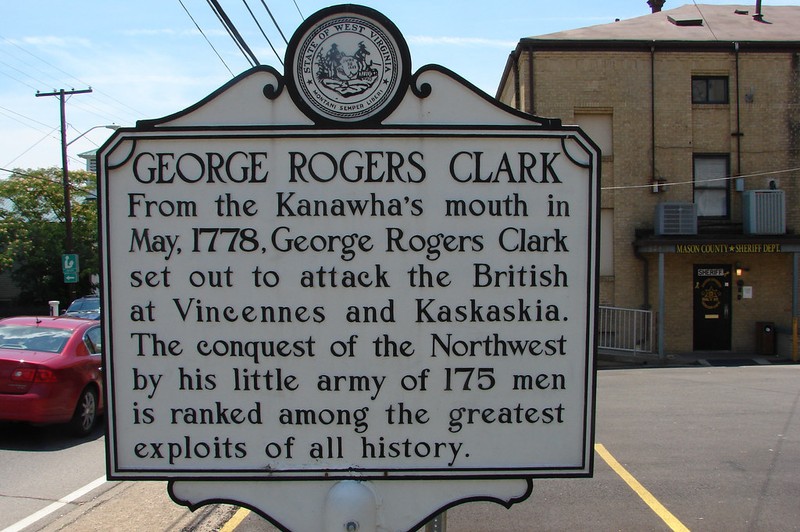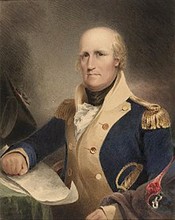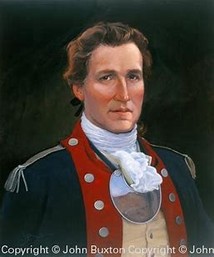George Rogers Clark (Historical Marker)
Introduction
Text-to-speech Audio
Images
George Rodgers Clark historical marker in Point Pleasant

George Rodgers Clark

Younger version of George Rodgers Clark

Backstory and Context
Text-to-speech Audio
George Rodgers Clark led a small force of 175 men across the mouth of the Kanawha River into what became Illinois to try and capture British held forts in 1779. Captain Joseph Bowman served under Clark and kept a journal of the march to Vincennes, revealing the difficult conditions the men faced. After the war, Clark continued to lead expeditions into the American West.
Clark was born November 19, 1752 in Albemarle, Virginia, the second child in a family that grew to include ten brothers and sisters. Five of the six boys born to John and Ann Rodgers went on to be officers during the American Revolution. In 1756, the family moved to Caroline County Virginia, and lived on a 400 acre plantation. Clark had little opportunity for formal education, but he later went to live with his grandfather who sent him to a school led by teacher Donald Robertson. While attending school some of his classmates included James Madison and John Taylor. Clark's Grandfather tutored him while he was not in school and trained him to be a surveyor.
At the age of nineteen, Clark left home on his first surveying job in western Virginia. In 1772, Clark headed to Kentucky by the Ohio River and spent the next two years surveying the Kanawha River and its surroundings. Clark became very familiar with the areas history and customs during his surveying career. Clark's military career began in 1774 when he served as captain in the Virginia militia. His first major challenge came when he was preparing to lead a expedition of ninety men down the Ohio River as a war broke out between the settlers and the Shawnee Indians within the larger conflict known as Lord Dunmore's War.
As the American Revolution led to war between the British and the Americans and their Native allies in eastern Kentucky, Clark was still surveying land and serving as a militia captain. In 1777, the war intensified in Kentucky when British Lieutenant governor Henry Hamilton tried to persuade Indian allies to join forces in hopes of acquiring control. The British promised supplies and control of lands to area tribes, and Clark spent months defending settlements from Hamilton's forces and allies.
After months of defending the settlements Clark proposed a plan to seize British outposts north of the Ohio River to destroy the British influence in the region. Clark led a secret expedition to try and capture British-held villages in Kaskaskia and Vincennes. In July of 1778, the Clark and his 175 men crossed the mouth of the Kanawha and defeated the British. Clark's victory added to his fame among Americans of European descent in this period. In the 19th century, Clark was sometimes referred to as the "Conqueror of the Old Northwest," and the "Hannibal of the West."
Sources
Prats, J.J. George Rodgers Clark. The Historical Marker Database. October 03, 2018. Accessed March 22, 2020. https://www.hmdb.org/Marker.asp?Marker=124201.
George Rodgers Clark. National Park Services. April 10, 2015. Accessed April 12, 2019. https://www.nps.gov/gero/learn/historyculture/clark.htm.
